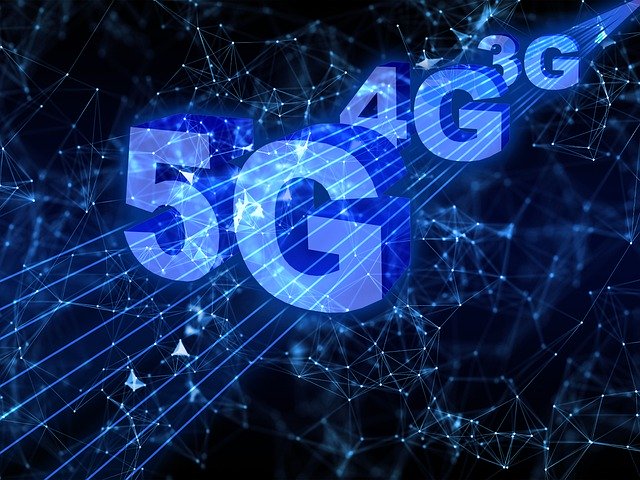With advanced 5G deployments in the pipeline, people have many questions about 5G as a technology, its applications, and different use cases, and how is it going to impact the connected lives once it is rolled out. Well, one thing is for sure that 5G is going to be transformational. It is going to leverage the already present 4G to enable applications that are not practicable right now, especially in the cities and urban areas. Now, this sounds relevant as according to the latest report by the UN, by 2050, the world’s two-third population will be living in the cities. Thus, it becomes crucial to understand the concept of 5G inside-out.
What is the present status of 5G in terms of global deployments, trials, and subscribers?
Keeping in mind the latest stats shared by GSA and Omdia, by 2024, 5G is going to have a major chunk of 19.3 per cent of the global market.[1] With countries like the United States of America, China, and South Korea as the major players, 5G is going to be the fastest deployed technology ever. According to global analysts, 5G has the potential to generate around $12.3 trillion sales activity across different industry verticals while supporting around 22 million jobs by the year 2035[2].
What are the key factors fueling the adoption of 5G?
With reports stating that the probability of the global 5G market to grow by 11 per cent between 2019 and 2025, it is intriguing to find out what is fueling the adoption of this technology. Some of the factors that we zeroed down go as follows:
- Meeting customers’ ever-increasing need: Global consumers want a seamless experience and regular improvements in the network speed to be satisfied with the network performance. Driving networks toward 5G is vital to keep up with this expectation for quality user experience and higher speeds.
- Better than usual Wi-Fi: Currently, around 82 per cent of consumers prefer Wi-Fi over mobile broadband. The addition of 5G to the current mobile network will make offload mobile networks obsolete. It would be an ‘always-on’ mobile approach that would easily handle all the traffic and would make it convenient for users to stay on mobile networks.
- Devices, services, and apps of the next era: It is the 5G technology that is going to create the foundation of a smart world and technological innovations, including smart mobility, IoT devices, and apps, smart utility grids, etc.
What does 5G hold for businesses in terms of applications and use cases?
There is no doubting the fact that 5G and the associated applications are going to transform lives. Here are some of the most interesting use cases of 5G:
- Autonomous Mobility: Powered by the low latency of 5G, vehicles will be able to reach 10-100 times[3] more quickly as compared to the efficiency on current networks. This will enable vehicles to respond to objects and react accordingly automatically and immediately, thus making the vision of autonomous mobility a reality.
- Industrial Automation: A well established industrial automation set-up requires a complete synchronization between supply chain applications and robotics at work. Currently, these include cables as Wi-Fi is unable to provide mobility, range, and the quality of service required. With 5G, all these cords will be a thing of the past, giving way to smarter factories.
- Wearable and Mobiles: Connected IoT devices, including wearables, sensors, and trackers, are going to be a massive target for 5G. With 5G powering these devices, the experience is going to be seamless without any dropped signals or delays in any area.
What are the challenges that 5G players may face while optimal utilization of 5G?
Deployment of 5G isn’t going to be a cakewalk. There are certain challenges that CSPs need to address while ensuring the utilization of 5G.
- Building denser and complex network: As compared to 4G, 5G networks are going to be denser and more complex. In other words, it would need more 5G hardware and software, which would eventually increase as the traffic on 5G grows.
- Keeping costs lower: The addition of all the hardware and software will directly impact the OpEx or operating expenses. Other than that, these networks require configuration, testing, management, and regular updating that would further escalate the OpEx.
- Meeting the low-latency needs: 5G networks need ultra-low latency to function in the best manner. Not for the telecom operators, this may pose a need for the device market that allows the delay of one millisecond in one way communication.
What is the growth path of 5G?
Apart from the above-mentioned use cases, 5G is going to transform the way enterprises and organizations used to think about connectivity. The new industry verticals like robotics, aerospace, and defense, and automotive are going to use 5G as the backbone to support the various intelligent edge applications and devices.
Summary: With 5G becoming the talk of the town, major network operators, IoT players, and businesses are equally excited and concerned about this technological advancement. This article talks about the current deployment status of 5G in the world and the predictions related to its growth. Also, there is an extensive discussion on the significant factors that are driving the key market players to shift their gears toward 5G and some use cases where 5G’s transformational capabilities are going to be the game-changer. Last but not least, the article narrows down some of the challenges that CSPs may face in the deployment of 5G, and the growth path experts are expecting 5G to follow.
[1] https://telecom.economictimes.indiatimes.com/news/global-5g-subscriber-base-reach-17-73-million-4g-base-at-5-27-billion-report/74961285
[2] https://www.everycrsreport.com/reports/R45485.html
[3] https://www.digi.com/blog/post/5g-applications-and-use-cases






